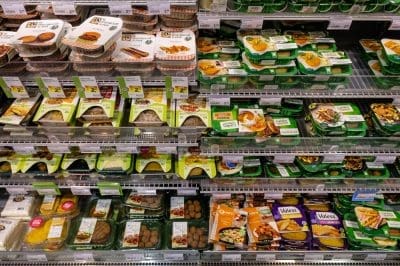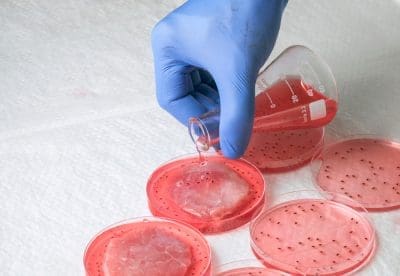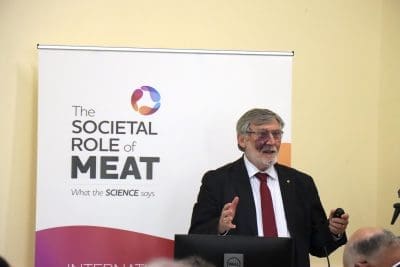After initial early hype and soaring investor interest, the plant-based meat industry is doing it tough.
Sales are falling, company values are plunging and workforces are being slashed.
 The industry, which some of its proponents claimed would bankrupt the global meat sector by 2035, is increasingly looking more like “another food trend whose novelty is wearing thin”, as one Bloomberg article described it last week.
The industry, which some of its proponents claimed would bankrupt the global meat sector by 2035, is increasingly looking more like “another food trend whose novelty is wearing thin”, as one Bloomberg article described it last week.
It’s not the death of the plant-based protein sector but a wall of reality that tends to follow the introduction of most new technologies.
Known as the ‘hype cycle’, new technologies often enjoy early fascination by the media and influencers which in turn prompts investor interest.
But then, having reached the ‘peak of inflated expectations’, hype is replaced by actuality as the true extent of customer interest becomes clear, and products enter the ‘trough of disillusionment’, where sales data can often fall far shorter than the early bold forecasts which helped to attract investment backing promised.
Rather than displacing the meat industry, the plant-based sector is now looking more like a niche category, as Bloomberg reported: “After Beyond, Impossible and their copycats spent years trying to seduce everyone away from meat, it appears their best customers are, well, the 5% of the population who didn’t eat meat in the first place.”
Cell-based and precision fermentation challenges
While plant-based manufacturers try to navigate a commercial path beyond the trough of disillusionment, another alternative meat category is riding the earlier stages of the hype cycle.
 Cell-based and lab-grown meat startups have attracted more than $2.5 billion in funding from investors including, as they did in the plant-based category, Bill Gates and Leonardo DiCaprio.
Cell-based and lab-grown meat startups have attracted more than $2.5 billion in funding from investors including, as they did in the plant-based category, Bill Gates and Leonardo DiCaprio.
There are now more than 140 startups in the space globally.
In echoes of what was seen in the plant-based category, some in the cell-based sector, including a widely reported ‘Rethink X’ report, have confidently predicting lab-grown “meats” will drive the collapse of conventional beef and dairy cattle farming by 2035.
While plenty of investors are buying in, such reports have also prompted some experts in cellular technology to warn there are still many hurdles to be overcome which are not being publicly shared by proponents. (Click here for more)
With a long career in the pharmaceutical sector and the CSIRO, Monash University Adjunct Professor Paul Wood AO is an independent expert with decades of experience in many of the technological processes being used to produce the new generation of “lab-grown meats”.
By his own admission he is not “anti-alternative proteins”. His view is that many protein sources will be needed to feed growing human populations in future. He sat on the board of Dairy Australia, chairs an insect protein start-up Viridian Renewable Technology, and has sat on the advisory board of Cellular Agriculture Australia.
But he does take exception to claims that he believes over-state what the technology can achieve
His concern is not that the technology doesn’t work.
“The technology does work, because we have been using it for decades in the pharmaceutical industry,” he said in a presentation to the Societal Role of Meat conference in Dublin.
His concern is that the technology will not work at the scale many cell-based startups are claiming they will be able to deliver, nor at a cost that is competitive.
The largest fermentation tanks used by the pharmaceutical sector for the cell-based human health field are around 20,000 litres, which stand about four stories high.
To achieve production at that scale involves a time-consuming process, starting with a small vessel and then gradually scaling up in 10-fold increases at a time.
If the aim is to produce a cell-based product in a 2000 litre vessel at the end, the process starts with a 2 litre vessel, which is then used to seed a 20 litre vessel, followed by a 200 litre vessel before scaling up to the final 2000 litre vessel.
Some cell-based meat startups are already commissioning vessels at 250,000 litres.
Professor Wood said this was hard to believe, and appeared to be more about “virtue signalling to investors” than good science. Producing a batch in 250,000 would also be extremely high risk he said. “If I am going to do 250,000 litres and I put everything in one batch and the vessel goes down, gets contaminated or something goes wrong, I have got all these customers waiting. You don’t do it from a manufacturing point of view, it is just too high risk. You’re better off running a series of 20,000 litre vessels to manage your risk.”
The one product that has been commercially released so far, a chicken meat analogue in Singapore, is developed using a 5 litre fermentation tank, and can only produce about 1000kg of product per year.
“If they are going to get up and produce commercial quantities of meat, they are going to have to scale up a long way.”
Challenges include the need to maintain a continuous sterile environment which requires significant capital outlays and high costs of culture media with high quality growth factors to reduce variability.
The processes are also highly energy intensive which is another major cost. One report from Oxford University suggested that if anything other than totally renewable energy sources were used to power the process, meat from this source could not be considered as sustainable as producing meat from livestock.
Mammalian cells are not easy to grow. They are rather fastidious, and take time to nurture. Meanwhile, if any extraneous agents such as bacteria or yeast are allowed to enter the sterile environment, they can quickly overgrow and destroy the culture. People in labs wear PPE not to protect themselves, but to protect the cell-cultures.
A favoured line from one of his undergraduate lecturers was that “sterility is like pregnancy, you can’t be a little bit sterile”.
“So it can’t be ‘it’s generally pretty good, we’re 90pc sterile’. It is either sterile or it is not.”
Cell-based companies who avoid high standards of manufacturing to lower costs are likely to do so at their peril.
But the process has an even bigger problem that the industry has avoided talking about, and probably for good reason, Professor Wood points out.
Producing cell-based meats involves a process that comprises “immortalising cell lines”.
“What is an immortalised cell line? It is like a tumour cell.” (Click here for more)
This was just one of several hurdles manufacturers will have to overcome to win consumer acceptance, including the challenge of matching the taste and texture of real meat, and the nutritional value. Cultured cells will not contain the fats, minerals or vitamins found in meat.
At the Australian Government Senate inquiry into labelling of alternative meat and dairy products in 2021, Professor Wood told Senators he was more concerned about the claims made on back of packaging of alternative meat products than what was on the front.
“The ‘lie’ wasn’t on the front of the label, it was on the back, where they said these products have the same nutritional characteristics of milk and meat,” he said.
“And that is not true, because they don’t take into account bioavailability, they don’t take into account quality of protein.”
Most companies will not be able to produce “meat” in the form of a steak due to technological barriers, and stop instead at producing a “cell slurry”.
“One problem when you create fibres (for steak) is that you can no longer pump out of your tank,” Prof Wood explained to the conference.
“So if I have got a 20,000 litre tank, and I have got all of these fibres, how do I get the stuff out of there?
“Most of them are using actually cell slurries, which they use to produce burgers or sausages, generally by blending with some sort of plant-based product.” Hybrid products also help to reduce the cost of the final products.
Professor Wood said the cell-based industry’s own data shows that the cost of manufacture must still come down more than 100-to 1000 fold to be competitive with the price of commodity meat.
Promoters of the industry make the point that rapid advances in technology have disrupted many other industries and the same thing will happen with cell-based meats.
For example, they point to Moore’s Law which holds that computing power per unit of cost generally doubles every two years on average.
But Professor Wood points out that while that may apply to engineering processes, it has never applied to biological processes.
“Biological processes dont follow Moore’s Law, it has never applied to Moore’s Law. They have lots of feedback systems. Cells won’t grow above a certain density. They are fussy, they like complex nutrients, they don’t like sitting in their own waste. After a while if you don’t keep changing that media, they stop growing.
“When people say you just don’t understand Moore’s Law, tell me a biological system that Moore’s Law has ever applied to?”
For these reasons and others Professor Wood believes the future of cell-based meats or precision fermentation products will be in niche markets but at high costs.
A key justification for the existence of the lab-meat sector is the need to be able to produce protein to support a population that 10 billion people that will soon exist across the world.
But that view itself does not necessarily stand up to closer scrutiny.
The vast majority of future human population growth is expected to occur not in New York or London or Sydney, but in Africa.
“Ask yourself, is this the tech that is going to solve the situation in Africa? Because that is actually the food security problem,” Professor Wood said.


Already we have a rash of auto immune diseases and cancers through nutrient poor food and over simplified diets which has devastated the biodiversity in the gut of people in developed countries. My opinion is that lab grown protein can only push us further down this path and with none of the symbiosis with natural systems possible with pasture grown protein.